RARE! WWII 1945 Iwo Jima Mount Suribachi Airfield No. 1 B-24 Liberator Mission
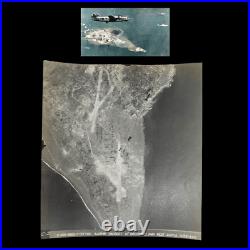
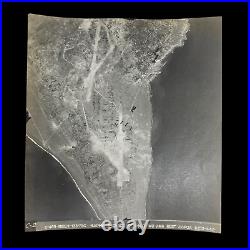



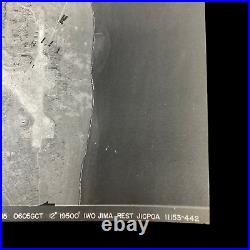
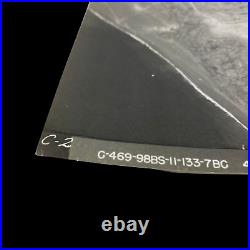
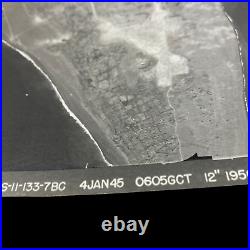
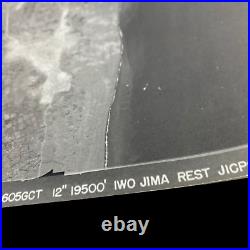

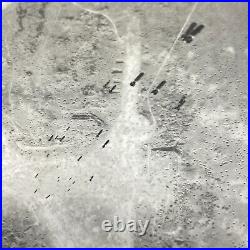
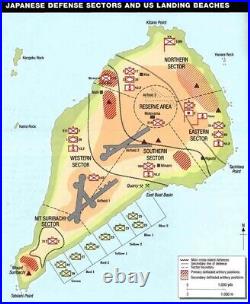

This incredibly rare, and museum-grade original WWII Iwo Jima pre-invasion B-24 Liberator aerial raid photograph was taken on January 4th, 1945 (one month before to the amphibious D-Day assault of Iwo Jima in February 1945). Pre-invasion mission/bombing raid photographs like this of Iwo Jima invasion are extremely rare. This B-24 aerial raid mission photograph shows a bombing raid on the Mount Suribachi sector of. This photograph also shows all of the D-Day amphibious landing beaches of GREEN, RED 1, RED 2, YELLOW 1, YELLOW 2, BLUE 1, & BLUE 2.
South Field was significant to the overall Battle of Iwo Jima. It was during the fight to secure this airfield that Medal of Honor recipient Gunnery Sergeant John Basilone was killed. This mission photograph was taken on a B-24 Liberators two days following the infamous. 2 January 1944 raid of more than a dozen.
Commander of the island, Lieutenant General. Diverted more than 600 men, 11 trucks, and 2 bulldozers for immediate repairs.
As a result, the airfield again became operational after only twelve hours. It was used by the Japanese until 19 February 1945 when the. It was the assignment of the.
To get this airfield operational as soon as the Marines had secured it. By the time that happened the 133rd had taken so many casualties supporting the. That the assignment was first given to the 31st CB but the 62nd CB ended up with it. Even so, all three battalions worked together to get it operational. This was also used to update the SECRET, CLASSIFIED, and RESTRICTED Iwo Jima invasion maps and pre-invasion battle plans. The area shown in this large aerial intelligence photograph shows intensive air and naval bombardments from the days prior. Operation Detachment, the amphibious assault on Iwo Jima, had its genesis in the 29 September-1 October 1944. Bombing raids and occasional naval bombardment had been carried out against Japanese facilities on Iwo Jima since June 1944 and this bombing intensified in the weeks leading up to D-day. Although the air raids damaged some Japanese fortifications, Navy underwater demolition teams landed for a beach reconnaissance overestimated the bombing missions' impact and did not note the full extent of the Japanese underground fortifications.V Amphibious Corps requested a concentrated shore bombardment for 10 days prior to the landings. However, citing ammunition supply issues, Task Force 52, the amphibious support force providing fire support, only provided three.
Adverse weather curtailed bombardment operations on 16 February, the first day. Ultimately, only 13 hours of effective bombardment were carried out over the three-day period.
Fifth Fleet also began minesweeping operations around the island, specifically of the approaches to the designated landing beaches. Prior to the operation, Spruance had detached Task Force 58, his fast carriers (which also carried eight Marine Corps fighter squadrons), to strike strategic targets on Honshu in wide-ranging support of the Iwo Jima landings.
The Marines, already unhappy with the shortened duration of naval gunfire support and believing continuous close air support of the ground forces should take priority, hardly welcomed this decision. The Battle of Iwo Jima was an epic military campaign between U.Marines and the Imperial Army of Japan in early 1945. Located 750 miles off the coast of Japan, the island of Iwo Jima had three airfields that could serve as a staging facility for a potential invasion of mainland Japan.
American forces invaded the island on February 19, 1945, and the ensuing Battle of Iwo Jima lasted for five weeks. In some of the bloodiest fighting of World War II, it's believed that all but 200 or so of the 21,000 Japanese forces on the island were killed, as were almost 7,000 Marines.But once the fighting was over, the strategic value of Iwo Jima was called into question. This item is in the category "Collectibles\Militaria\WW II (1939-45)\Original Period Items\United States\Field Gear, Equipment". The seller is "premierrelics" and is located in this country: US.
This item can be shipped to United States.- Conflict: WW II (1939-45)
- Original/Reproduction: Original
- Theme: Militaria
- Modified Item: No
